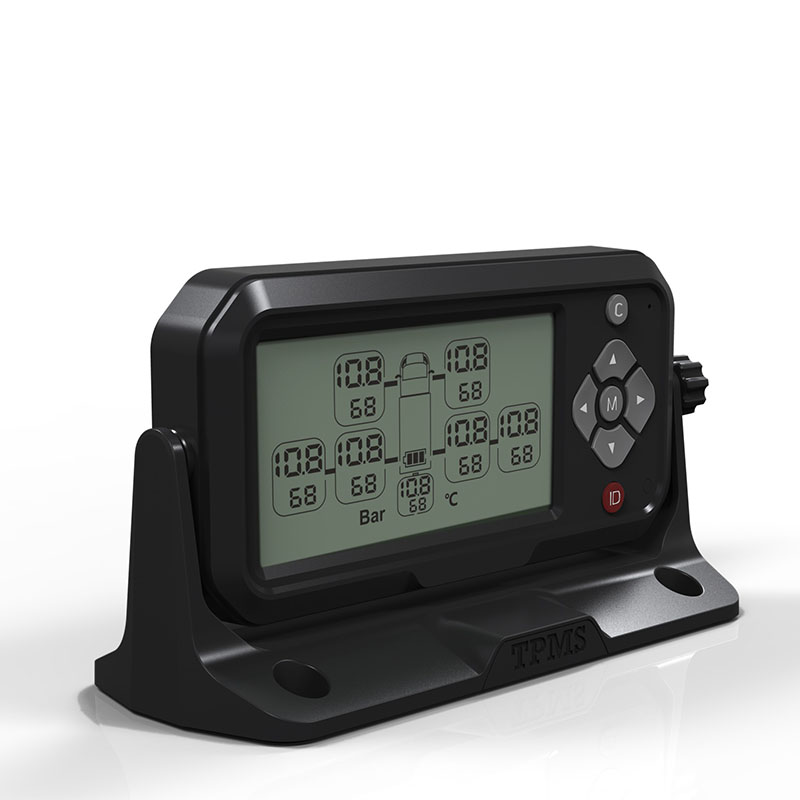When the rubber meets the road, this is the most affordable way to improve your automotive experience.
Gear-obsessed editors choose every product we review. We may earn commission if you buy from a link. Why Trust Us? Wireless Tpms Sensor

Maintaining appropriate tire pressure is one of the easiest (and most overlooked ways) to improve your driving experience. And that’s really no surprise, as your tires are the only part of your vehicle that actually touch the ground. Quick check-ups every month can not only make sure your rubber goes the distance, but can improve fuel efficiency, comfort, and even performance.
While tires may seem quite large, the contact patch where the rubber meets the road is actually quite small—roughly the size of a football. Properly inflated tires maximize the size of your contact patch without risking safety at higher speeds, though this changes when you’re going off-road.
Sure, some anoraks would argue that overinflating your tires causes the surface of the tire to balloon ever so slightly, making the contact patch smaller; their logic is that less surface area leads to less rolling resistance. While this does happen, we put the idea to the test quite a while ago, and the results yielded incredibly small improvements in fuel efficiency—along with considerable discomfort for the test editors involved. The properly inflated tires put down very similar numbers.
“Driving with incorrect tire pressures can affect a vehicle’s handling and braking, particularly in wet conditions, and can seriously compromise your safety,” Russel Shepherd, technical communications director at Michelin tires, tells Popular Mechanics.
Tire-pressure monitoring systems (TPMS) are a great safety innovation, alerting you if they notice any fluctuations in your tire pressure—which could be tell-tale signs of an incoming flat tire. There are two types of systems: direct and indirect. Direct tire-pressure monitoring systems take internal pressure and temperature readings from sensors in each tire and send them, typically wirelessly through a radio signal, to a central control module. Most of the time, the sensors are mounted inside the tire, and because they’re battery operated, they’ll need replacing every ten years or so–sometimes a dead TPMS battery can trigger your tire light.
Indirect tire-pressure monitoring systems, by contrast, don’t use pressure sensors at all; instead using wheel-speed sensor data to determine the size of your tire based on how fast it’s rotating–an underinflated tire, for instance, is smaller than a properly inflated one. Not sure which system your car uses? Take a look at the valve stems. If a nut holds them in place, they probably have pressure sensors inside.
✅ Understanding PSI Pressure: How you measure tire pressure will vary depending on where you live. Per U.S. customary units, which are based on the imperial system, psi is the standard unit of pressure and stands for “pounds per square inch.” As the name suggests, psi is the pressure resulting from a force of one pound applied to an area of one square inch. Under the International System of Units, which is based on the metric system that the rest of the world uses, a pascal (Pa) is the standard unit of pressure; a pascal is the pressure that the force of one newton puts perpendicularly onto an area of one square meter. One psi is approximately equal to 6,895 Pa.
However, not all vehicles have a hard reset button, and that’s not actually a massive deal. If you can’t find any buttons, a brief drive will likely resolve the issue. Most tire-pressure monitoring systemsreset after driving 50 mph for 10 minutes. So hop on the highway for a brief stint, and then you’ll be golden.
Matt Crisara is a native Austinite who has an unbridled passion for cars and motorsports, both foreign and domestic. He was previously a contributing writer for Motor1 following internships at Circuit Of The Americas F1 Track and Speed City, an Austin radio broadcaster focused on the world of motor racing. He earned a bachelor’s degree from the University of Arizona School of Journalism, where he raced mountain bikes with the University Club Team. When he isn’t working, he enjoys sim-racing, FPV drones, and the great outdoors.
How They Built the Las Vegas Formula 1 Circuit
What a UAW Strike Could Mean for Car Buyers
How to Replace Your Car’s Brakes
1-Up’s Heavy Duty Double Rack Checks All My Boxes
Robert Downey Jr. Is a Gearhead Just Like You
The Surprising Origins of the Michelin Star Rating
How Chevy Built Its New Corvette Z06 Engine
How To Get a Killer Deal on Your Next Car
How to Remove Rust on Your Car Like a Pro
All About the 17 Most Badass American Muscle Cars
Fueling Up With Cheap E15 Gas? Read This First
A Part of Hearst Digital Media
We may earn commission from links on this page, but we only recommend products we back.

Car Tyre Pressure Monitoring Device ©2023 Hearst Magazine Media, Inc. All Rights Reserved.